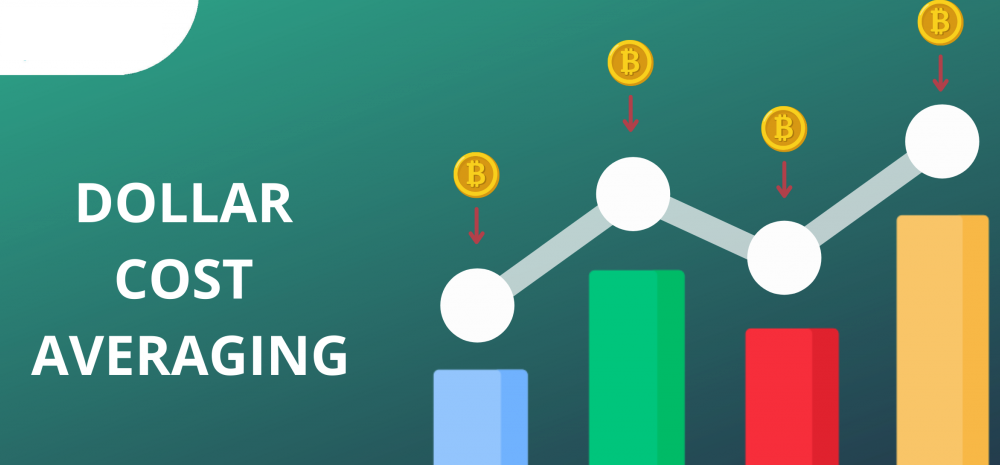All investors are used to starting more or less in the same way.
At first you are thrifty.
You are accumulating money in the bank, then you read because apart from saving you have to invest, and you find that you have a lot of money (relative) in the bank account.
For some it will be a few thousand, or even someone else has told me, hey I have 50,000 euros and I don’t know what to invest it in .
The point is that when you make the move from saver to investor, no matter where you are in terms of liquidity, there is nothing more stressful than having to make a decision about how to invest a large amount of cash.
Again, that “great” liquidity will be relative to each one, but the feeling of anxiety may be present in the same way as those who have to invest an amount of € 5,000 or € 50,000.
The instinct of many individual investors tends towards a DCA investment, or Dollar-Cost Averaging (that is, Average Cost in Dollars).
Keep in mind
Investing a little at a time has become part of the common wisdom regarding investing.
In fact, I use it with the robo advisors for the index funds in which I contribute a little bit each month .
This is partly due to the confusion surrounding some contributory systems, such as pension plans.
In this sense, it must be taken into account that these plans do not actually use dollar-cost averaging, since they invest completely in funds as soon as a person’s contribution is available.
On the other hand, many investors have gotten it into their heads that it is crazy trying to know when the markets have reached a low or a high.
Invest gradually?
So why make a big bet by putting all that money on the market at the same time? Wouldn’t it be smarter to invest it gradually?
Many investors do not realize that a DCA investment involves a gamble.
SpecificBy investing with a DCA strategy, you are betting that the market will go down for a while and then rebound .
By doing so, you are adding more uncertainty to your portfolio planning.
In their article titled, “Dollar-Cost Averaging: Fact and Fiction,” Morningstar’s Maciej Kowara and Paul Kaplan address the myths surrounding DCA investing versus LSI (Lump-Sum Investment) investing. ).
Specifically, they demonstrate that the DCA strategy has produced lower long-term historical returns than the LSI .
At the same time, the profitability of the DCA system has more uncertainty than the results obtained with the LSI technique. This could imply a higher risk in meeting an investment objective.
Will a DCA investment make you richer?
Making the decision to invest a large sum of money in the markets is something that is often accompanied by fear.
What if the markets sink tomorrow? Or next week? Or even a year from now?
Unpredictable
The reality is that nobody knows what the markets will do tomorrow, or in a week, or in a year.
The expectation that the market could sink within a week is based on no more evidence than the idea that stocks could rise 10 percent.
But the most important thing is to analyze the mathematics of a DCA investment versus an LSI. In this sense, on average, a DCA investment will not make you richer .
Delaying your assets
When the expected return of the markets is positive, delaying part of the entry of your assets into the market implies giving up the gains that (on average) you could have achieved with the money you had reserved.
This can be demonstrated by historical data for large-cap US stocks since 1926.
Kowara and Kaplan calculated the results of an LSI strategy over periods of two, three, four and up to 120 months, comparing them with the final equity achieved by distributing the total investment in monthly fractions throughout those periods.
They then calculated the percentage of cases in which a DCA investment was greater than an LSI for each time period.
The results were illuminating. If you analyze the average period of 10 years, nine times out of ten an investor who had put his capital into the market little by little would have ended up with less money than if he had limited himself to putting everything in the beginning.
While this may contradict popular belief about DCA investing, it’s easy to find the logic: in a bull market (such as US large-cap stocks over the last century), the longer you delay the entry of your euros to market, the more likely you are to miss out on the gains you could have made.
Of course
Long-term averages hide potholes.
What if an investor had put in 100,000 euros in June 2008, just as the global financial crisis was about to erupt?
Wouldn’t it have been better to make a DCA investment and be able to take advantage of the lower prices? Well, even in 2008, an LSI investment would be a better option .
To illustrate, Kowara and Kaplan analyzed the results of a portfolio made up of stocks only and another portfolio with a 60/40 weight of S&P 500 stocks and bonds.
Well, despite the huge drop in investment in 2008, it’s not hard to understand why the LSI approach was superior: Since bottoming out in early 2009, the US stock market has been continually bullish.
Well, since the market was bearish only at the beginning, an investor would have had more time to recover and would have had more money in the markets during the low, compared to a DCA investor.
And what about investors who had a large sum of money in June 2009, but (shocked by the financial crisis) invested it little by little rather than suddenly? They would have been late to the bull market.
Of course, bags don’t always bounce hard after a big drop.
What if stocks had risen and fallen over an extended period of time, with no set course ? In this case things are less clear.
Perhaps the most famous example of an aimless market occurred in the 1970s.
Stagflation
With an economy ravaged by “stagflation” (slow growth and high unemployment) and high interest rates, equity markets struggled throughout the decade.
Despite this, in this case there was enough upward movement for a fully invested portfolio (equity only or 60/40 ratio) to outperform a DCA investment.
Specifically, the LSI strategy was 23 percent for the equity-only portfolio, and 33 percent for the 60/40 portfolio .
However, the story was a bit different during the 2000s. With two bear markets in a 10-year period, the S&P 500 was bearish considering the annual average during this decade.
In this environment, a DCA investment would have outperformed the equity-only portfolio, primarily because the stock market was bearish for a long period of time (rare).
However, the 60/40 portfolio would have continued to benefit from the LSI strategy, outperforming the DCA investment by 6 percent.
Does a DCA investment reduce risk?
This question is a bit more difficult to answer.
It involves comparing the risk of a strategy that invests completely early on with one that gradually accumulates exposure to the market.
Lower risk
However, if we analyze the variability of the results, the LSI strategy actually presents a lower risk profile .
Intuitively, it may seem that making the entire investment at the same time is riskier than doing it gradually.
Internal rate of return
To arrive at this result, Kowara and Kaplan used the Internal Rate of Return (IRR) of the portfolios, in order to measure their performance.
The IRR considers both the times and the magnitude of the flows involved.
Therefore, it is possible to make a meaningful comparison between the IRR and the more familiar Time Weighted Return (TWR), which is another way of calling the total return.
On average, the IRR and TWR of the equity portfolio using a DCA and LSI investment turned out to be roughly the same.
However, the IRR showed greater variability, that is, the distribution of its value was wide than in the case of the TWR.
Well, using IRR uncertainty as a risk metric, a DCA investment appears to be inherently riskier than an LSI strategy .
In this sense, it is possible to easily achieve an IRR that exceeds the TWR.
It is also possible to easily cope with lower returns. Furthermore, the variation of the IRR is greater than the variation of the TWR.
Simply put, with a DCA investment there is more uncertainty about how good or bad an investment will turn out .
conclusion
The fundamental problem with a DCA investment is that it is a strategy that depends on the moment. Saving the money and investing it later only makes sense if investors believe that the prices of the securities they plan to buy will fall for a time and then eventually rise.





